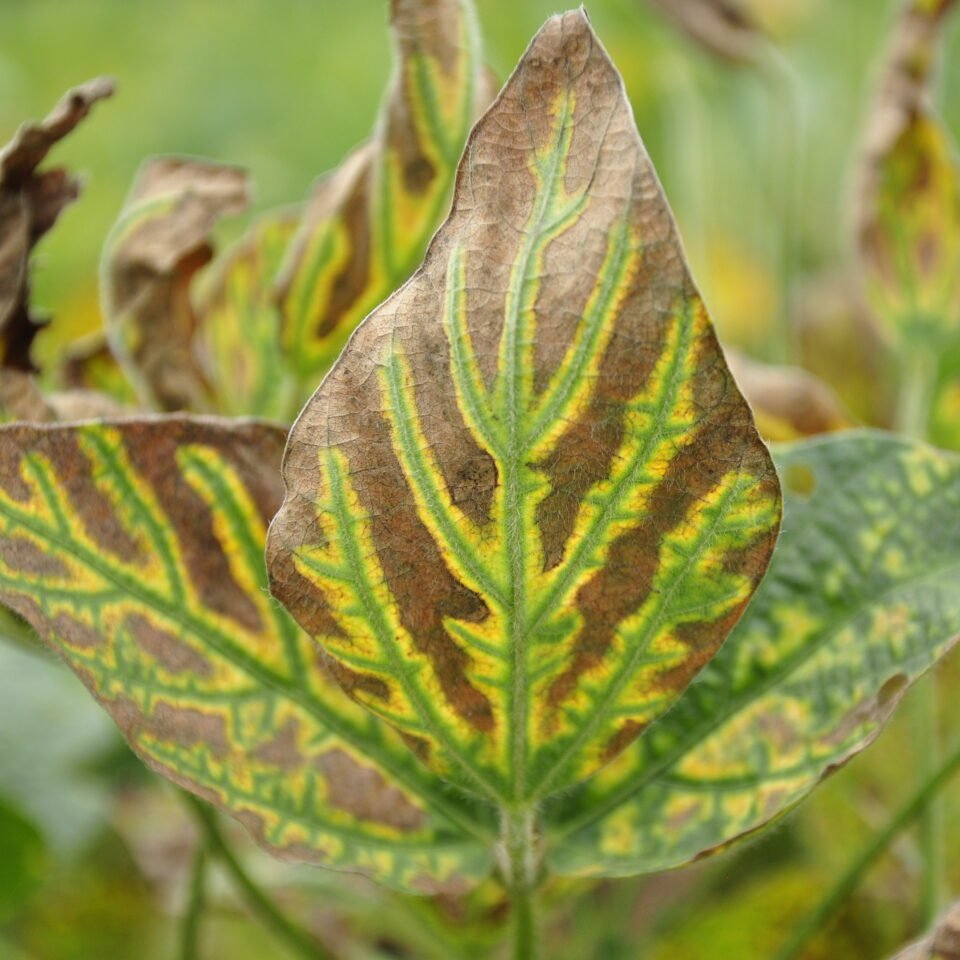
Sudden Death Syndrome (SDS) is becoming more widespread with every year and is now one of the main yield limiting diseases throughout Southern Ontario and many US states.
SDS is caused by a fungus that survives in the soil and on crop residue from soybeans and corn called Fusarium virguliforme. This fungus infects soybean plants early on in the growing season, often through existing root injuries caused from Soybean Cyst Nematode (SCN), insect feeding or mechanical injury. However, foliar symptoms do not show up on the plant until it is already in the reproductive stages of development. This is a result of toxins from the fungus in the root system moving up into the foliage of the plant.
Favourable Conditions
The development of SDS is favoured by cool, wet soils early in the growing season. Fields with a history of SDS will likely see the disease again in the next soybean crop.
- Low lying, poorly drained and compacted areas of the field can increase the severity of the disease.
- Early planted fields are also at higher risk of infection due to the temperature of the soil early in the season and the soil often being wetter.
- Fields with a history of SCN.
Symptoms
Infection usually occurs early in the growing season, but above-ground symptoms of the disease may not show up until mid to late summer. Key identifying features of the disease include:
- Interveinal chlorosis (yellowing), followed quickly by interveinal necrosis (dead tissue).
- Leaf veins stay green.
- Leaves drop but petioles (leaf stems) remain attached to the plant.
- Vascular tissue of the interior of the stem turns brown, while the pith remains white.
- Rotted root system.
Effect on Yield
SDS most often begins in patches and expands outward, sometimes affecting rather large areas of a field. Foliar symptoms appearing during early reproductive stages can lead to yield losses upwards of 90% in these patches. Late appearance of foliar symptoms during the R6 stage or later may have minimal loss associated.
Management Strategies
Sudden death syndrome is a soil borne fungal pathogen, which unfortunately means that nothing can be done during the growing season to treat the disease. Preventative management practices are the only method of limiting the impact of SDS.
- Plant varieties resistant/tolerant to SDS.
- Select varieties resistant to SCN to reduce the damage to roots that is providing an entry for SDS.
- Use seed treatments such as ILEVO to prevent infection.
- Incorporate non-host crops such as wheat in the crop rotation.
- Avoid early planting in cold, wet soils in fields with a history of SDS.
- Reduce soil compaction and improve soil drainage.
Featured Image: Crop Protection Network
Additional Sources: Cropwatch, Mueller et al. (2016) A farmer’s guide to soybean diseases. APS Press.